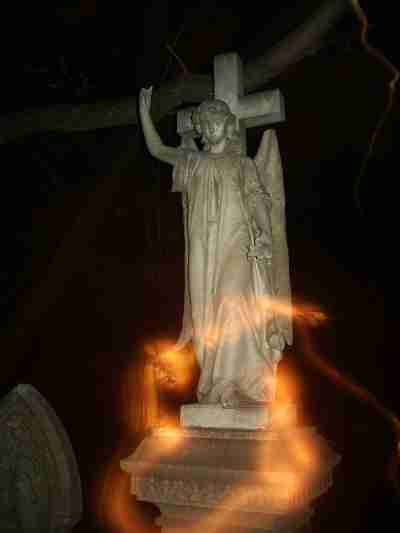In the midst of continuous denial by important members of the Japanese government individually or collectively that Japan was an aggressor in World War II, the planned exhibition of the Smithsonian Institute to commemorate the end of WWII in Asia has turned into an unusually fervid debate, with which an interest in discussing and writing on Japan's wartime atrocities has been aroused. Most prominent among numerous writings on the subject is "Japan Confronting Gruesome War Atrocity" penned by Nicholas D. Kristof and published inNew York Times on March 17, 1995.
The article has given us a detailed account of the most shocking, heinous, cruel crime the civilized world has ever known: Japanese Unit 731 used human beings for vivisection in order to develop biological weapons. Equally unbelievable is that the United States has covered up the crime in exchange for the data on human experiments, an act utterly ignoring international laws and human justice. What a great irony to the lofty ideal of democracy and the so-called "American civilization" of the 20th century! The shock created by Kristof's article has been felt primarily in the U.S. and a few Western countries. However, as early as 1949, the Soviet Union held a week long trial at Khabarovsk of the Japanese war criminals for biological warfare. Among those tried, 12 people were associated with 731, including General Yamada Otozo, Commander-in-Chief of the Kuantung Army, Lt. Gen. Ryuiji Kajitsuka, Chief of the Medical Administration, and Lt. Gen. Takaatsu Takahashi, Chief of the Veterinary Division, both in the Kuantung Army; Maj. Gen. Kiyoshi Kawashima, longtime head of Unit 731's production department; Maj. Gen. Shunji Sato, head of Unit 731's Canton branch; and Lt. Col. Toshihide Nishi, Major Tomio Karasawa, Maj. Maso Onoue, Lt. Zensaku Hirazakura, Senior Sergeant Kazuo Mitomo, Corporal Norimitsu Kikuchi, and Private Yuji Kurushima, all of Unit 731.
The entire proceedings of the trial were published under the title "The Trial of Former Servicemen of the Japanese Army Charged with Manufacturing and Employing Bacteriological Weapons" by Foreign Language Publishing House, Moscow, 1950. Since 1940, in Chinese theater, Ishii Shiro had led his Unit 731 to engage in biological warfare by attacking Ningpo, Chinhua, Chuchou of Chechiang province (during the Japanese-Soviet war at Nomonhan, Mongolia in the summer of 1939, Unit 731 was dispatched to the front to make bacterial assault). To retaliate the U.S. air raid of Tokyo led by Col. Doolittle in April 1942, from which over 60 U.S. airmen were rescued in Chechiang area, Japan launched a largescale mopping-up campaign, in which several hundred men from Unit 731 and its subsidiary Unit 1644 of Nanking took part. Early in November 1941, Unit 731 dispatched an airplane to spread bubonic plague at Changte, Hunan, which was verified by Dr. E. J. Bannon of American Presbyterian Church hospital at Changte. The event was well known to American and British intelligence agencies at Chungking and besides the Chinese government had fully informed the American and British government of it through its ambassadors Wellington Koo at London and Hu Shih at Washington. Chinese authorities had long learned that Japan used biological warfare against China and had repeatedly appealed to international communities for help.
Before making their escape at the time of Japanese surrender, Japanese in Unit 731 set free scores of thousands of infected rats that caused widespread plague in 22 counties of Heilungchiang and Kirin provinces that took more than 20,000 Chinese lives. As the plague was well publicized in newspapers and periodicals, many Chinese became aware of Japan's employing biological warfare in China during the war. While the Korean was raging, North Korea and China accused the United States of using biological warfare that rekindled the public interest in probing Unit 73 1. Among thousands of Japanese prisoners of war (POW) repatriated from Siberia, some belonged to Unit 73 1.
Together with those Japanese POWs then detained in China, they were tried in a special court at Shenyang (Mukden) in June 1956. Strikingly one of them was Ken Yuasa, the doctor mentioned in Kristof's article in the New York Times. Some others under trial included important members of Unit 73 1: Major Hideo Sakakihara who was in charge of Hailar branch of Unit 731 (there were four branches under Unit 731: Hailer, Sunwu, Linkou, and Mutanchiang), Dr. Yataro Ueda, Yukio Yoshizawa, Masauji Hata, etc. and also police affairs chief of the Kuantung Army Mibu Saito as well as many captains of Kempeitai (military police) who were responsible for providing Unit 731 with victims for vivisection (their oral and written testimonies were reprinted in a book entitled Chemical and Biological Warfares published by Chunghua Book Company in 1989).
Read more at
http://theunexplainedmysteries.com/unit731.html
 FROM ghosts and goblins to sea monsters and cannibals, Scottish history is littered with tales of the weird and wonderful. While some Scottish legends have become much-loved parts of our culture, other stories have disappeared into obscurity over the centuries. Now Glasgow University is set to revive Scotland's folklore thanks to a new postgraduate course examining mythical creatures, superstitions, beliefs and the storytelling that kept them alive. Here's a look at just some of the myths and legends that got handed down through the generations.
FROM ghosts and goblins to sea monsters and cannibals, Scottish history is littered with tales of the weird and wonderful. While some Scottish legends have become much-loved parts of our culture, other stories have disappeared into obscurity over the centuries. Now Glasgow University is set to revive Scotland's folklore thanks to a new postgraduate course examining mythical creatures, superstitions, beliefs and the storytelling that kept them alive. Here's a look at just some of the myths and legends that got handed down through the generations.



